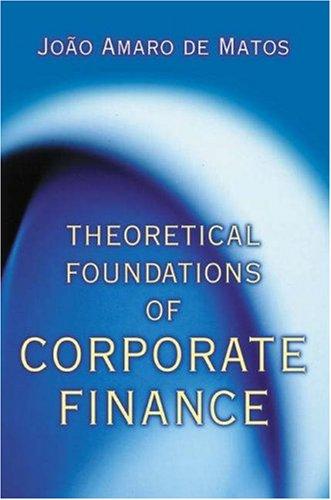Consider the following one-period model with two agents ( (mathrm{A}) and (mathrm{B}) ). At time (t=0) each
Question:
Consider the following one-period model with two agents ( \(\mathrm{A}\) and \(\mathrm{B}\) ). At time \(t=0\) each agent chooses how to allocate his/her initial endowment (5) between the risk-free asset and a project. At time \(t=1\) there are three possible states of nature with equal assigned probabilities. The endowment of agent \(\mathrm{A}\) is 1 in all states of nature, while agent \(B\) has an endowment of 1 in the second state of nature and of 2 in the others. Each agent maximizes a utility function of the form \(U(x, y)=u(x)+\sum_{i=1} p_{i} u\left(y_{i}\right)\) where \(u(w)=w^{0.5}\). The riskless asset has a rate of return of \(1 \%\). The project has an initial cost of 85 and payoffs \((60,120,95)\) in each of the three states of nature.
(a) Compute the optimal portfolio for each agent.
(b) Is the vector of state-prices of this economy unique? Justify.
(c) Suppose that there is a new project available in this economy with payoffs \((50,70,30)\). If the arbitrage-free price of this project is 38.02 , what are the state-prices in this economy? Are they different between agents?
Step by Step Answer:






